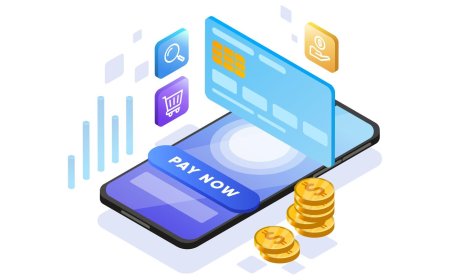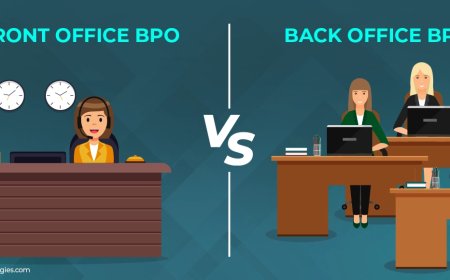Small Business Survival Guide: Navigating Inflation in 2025
In this guide, I’ll walk you through how small businesses can navigate inflation in 2025, ensuring survival and even growth despite the challenging economic climate. Whether you’re selling a product or offering a service, it’s all about strategy, flexibility, and planning.
Running a small business is tough at the best of times, but when inflation starts to bite, it can feel like youre fighting an uphill battle. With prices rising across the board, business owners need to find new ways to adapt and stay afloat.
The Inflation Dilemma: Whats Happening in 2024?
Inflation isn't just a buzzword it's a very real issue thats affecting businesses and consumers alike. For small business owners, the impacts of inflation can be felt in multiple areas:
-
Increased Supply Costs: Whether youre sourcing materials or products, inflation often means youre paying more for the same goods.
-
Higher Labor Costs: Wages often rise in times of inflation, making it more expensive to maintain your team.
-
Consumer Spending: As prices go up, consumers tend to spend less, which directly impacts small businesses, especially those in retail and service industries.
Understanding the nuances of inflation is key to finding ways to protect your business. But rather than simply trying to weather the storm, its crucial to use this moment as an opportunity to think smarter, adjust your pricing strategies, and ensure your financial health remains intact.
Step 1: Understand and Adapt Your Pricing Strategy
One of the first things businesses often do during inflationary periods is to adjust their prices. But its important to find the right balance. If you raise your prices too much, you risk losing customers. If you dont raise them enough, youll be eating into your profits.
How to Tackle Pricing During Inflation
Here are a few pricing strategies you can implement to make sure youre adapting to inflation without turning away your customers:
-
Tiered Pricing: Offer customers more affordable options at different price points. For instance, you could introduce a basic, mid-range, and premium version of your products or services.
-
Value-Based Pricing: Ensure that the price increase is justified by adding value. If youre going to raise your prices, make sure your customers feel like theyre getting more for what theyre paying.
-
Transparent Communication: Be upfront about price increases. People are more understanding if they know why the price hike is necessary. Explain the reasons behind the change, whether its due to rising costs, inflation, or other factors.
For example, I know from personal experience that customers are willing to accept a small price increase if they can understand the reason behind it. Its all about transparency and communication.
Step 2: Look for Ways to Cut Costs Without Cutting Quality
While it may seem tempting to reduce your overhead by cutting corners, its crucial to do so strategically. Cutting the wrong expenses could hurt your reputation or the quality of your product. Instead, consider areas where you can make smart adjustments.
Smart Ways to Trim Costs
-
Negotiate with Suppliers: Reach out to your suppliers and discuss price adjustments or bulk discounts. The more you order, the better chance you have of getting a better deal.
-
Outsource Where Possible: You dont need to hire full-time employees for every role. Freelancers or part-time staff can often be a more affordable solution.
-
Technology and Automation: Leverage technology to automate tasks like inventory management, customer service, or scheduling. This can help reduce labor costs and make your business more efficient.
By strategically managing your expenses, you can keep your margins healthy, even as costs increase due to inflation. Its all about making sure that every dollar spent brings value to your business.
Step 3: Boost Your Online Presence
In an era of inflation, your digital presence can make or break your business. More customers are turning to online shopping, and even if your business is primarily in-person, you need to tap into this digital shift.
The Importance of Going Digital
-
Expand Your Reach: Online sales can help offset any losses in foot traffic or in-store purchases. Whether its through your website or third-party platforms, having a strong online presence is crucial.
-
Engage on Social Media: Use platforms like Instagram, TikTok, and Facebook to connect with your audience. By providing valuable content, youll keep your brand top-of-mind for potential customers.
-
E-commerce: If youre not selling online yet, now is the time to start. You dont need a complex website to begin even a simple online store can help you reach more customers.
Whether youre a brick-and-mortar business or already online, diversifying your sales channels will help you stay resilient against the pressures of inflation.
During these times, I also realized that taking a break from work to relax and clear my mind can help me think more clearly. If you need to recharge during a long day of work, a visit to a smokeshop near me can provide a moment of relief. Whether you vape or just need a quick break, sometimes stepping away helps you see the bigger picture.
Step 4: Increase Customer Loyalty Through Value
During inflation, customers become more conscious of their spending, so its crucial to not only attract new customers but to retain the ones you already have. Loyalty programs and personalized offers can help keep your existing customers happy while also encouraging repeat purchases.
How to Keep Your Customers Coming Back
-
Loyalty Programs: Reward customers for their loyalty. This could be in the form of discounts, exclusive access to new products, or reward points.
-
Personalized Communication: Use email marketing or SMS to send personalized offers to your regular customers. Make them feel valued.
-
Customer Experience: Focus on delivering outstanding customer service, whether in person or online. Word-of-mouth referrals can go a long way in helping you grow your business, especially when customers feel appreciated.
Ensuring that your customers feel valued during inflation will not only keep them coming back, but it will also build a stronger relationship that can carry your business through tough times.
Step 5: Diversify Your Offerings
A business that relies on a single product or service is vulnerable to inflationary pressures. If one products price increases or its demand decreases, you might feel the sting. One of the best ways to ensure long-term survival is by diversifying your offerings.
Expand Your Product Line or Services
-
Introduce Complementary Products: Think about what your customers already buy and see if theres an opportunity to offer something related.
-
Seasonal or Trending Items: Keep an eye on market trends and introduce products that are in demand or seasonal.
-
Customized Services: If youre service-based, consider offering packages, bundles, or specialized services that cater to a broader audience.
For instance, many businesses are expanding their product ranges to cater to different preferences. If you already sell a product, perhaps you can offer variations or related items to keep your customers engaged.
In fact, for those of us who enjoy vaping, you might want to consider diversifying your options and check out how easy it is to buy vapes online. Its a simple way to stay stocked up without leaving the house, especially when navigating inflation.
Inflation is a challenge for small businesses, but with the right strategies, you can survive and even thrive in 2024. By adjusting your pricing strategy, cutting costs intelligently, embracing digital tools, building customer loyalty, and diversifying your offerings, you can protect your business and ensure its long-term success. While its tough out there, its all about staying adaptable and forward-thinking. After all, the businesses that are able to pivot will be the ones that come out ahead. Stay resilient, and dont forget to always stay connected with your customers they are your most valuable asset.





























